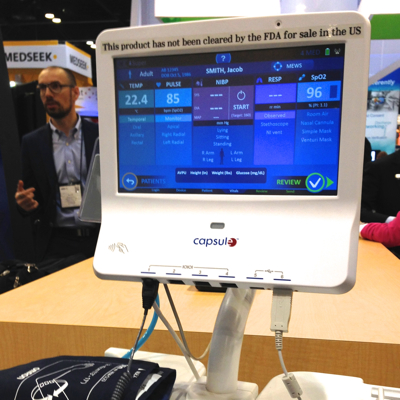I've noted a recent flurry of search engine queries on "fda approved wireless alarms." The same topic was raised by a reader in a recent email. So, given the subject's topical interest I thought I'd ramble a bit.
First the short answer: the only FDA approved wireless alarm available today is from Baxter with their Colleague CX smart pump. They have a PDA that is included in their 510k as a means for primary alarm notification. This means the wireless alarm notification capability was validated and verified in accordance with the FDA's QSR (Quality System regulation).
Now for the long answer. Patient care must should be delivered in a way that is consistent with the "intended use" of all medical devices (IV pumps, patient monitors, vents, etc.) that are used in delivering care (not following the manufacturer's intended use is an "off label" use). This means that staffing levels along with nursing unit policies and procedures must be based on medical device capabilities that are claimed by the manufacturer and cleared by the FDA. The "intended use" forms the basis for the claims made for a product by the manufacturer, and is a part of both a products "directions for use" (DFU) and a part of the devices 510k submission. Capabilities listed in the 510k are primary.
Numerous products abound that "supplement" a device's primary capabilities - these secondary capabilities are often from third part manufacturers. In the world of FDA regulated medical devices, primary alarm notification is the belt and secondary alarm notification are the suspenders. From a risk management point of view, hospitals can just wear belts or wear belts and suspenders, but they should not wear suspenders without a belt without doing some additional homework.
Pressures on operating costs, initiatives to improve patient safety and staff productivity - even the trend to private rooms - all create incentives to automate the point-of-care where devices connected to patients generate alarms and caregivers must respond. The first major dust up in this area was a few years ago with Data Critical. They came up with a pager system that would generate a page upon an alarm condition, sending the caregiver the patient, their room, the type of alarm and even a snippet of waveform (so they could rule out common false-positive alarms). Initially patient monitoring vendors offering the Data Critical solution were "positioning" it as good as primary alarm notification. Sadly, most paging systems use open loop communications - there is nothing that ensures that a message was received and acted upon, and a number of sentinel events ensued when pages reportedly never made it to the pagers carried by the nurse. Now monitoring vendors are much more aggressive in making primary vs. secondary distinctions. Unregulated vendors (wireless communications, software, data acquisition, and the like) are not so proactive in making this distinction.
A clinical engineer from a major medical center sent me the following just last week:
It looks like he may be right.
There's a lot more on primary vs. secondary alarm notification here and here. Also, try the term "alarm notification" in the search box on the right hand of the page for many more entries, or select the Clinical Alarms category.
UPDATE: This post was edited in January 2014 for accuracy and clarity. Pictured is a Zip It Wireless pager captured at HISS 2011.



Recent Comments